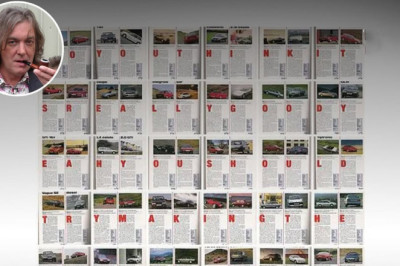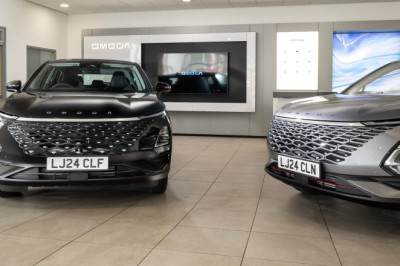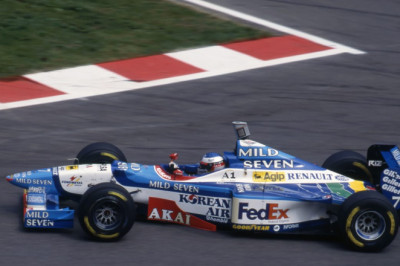
1. Ford Model T

The Ford Model T, unveiled in 1908, stands as a true game-changer in the history of the automotive industry. With its introduction, Henry Ford aimed to create a vehicle that would be within reach for the average person, thereby democratizing automobile ownership. The Model T's most significant achievement was its affordability, thanks to Ford's innovative production methods and assembly line system.
Prior to the Model T, cars were largely considered luxury items reserved for the wealthy. However, Ford's vision was to make transportation accessible to the masses, and he succeeded remarkably. By employing efficient manufacturing techniques, such as interchangeable parts and division of labor, Ford was able to reduce production costs and ultimately lower the price of the Model T.
The impact of the Model T on society was tremendous. Suddenly, owning an automobile was no longer a privilege of the elite but a possibility for the working class. This newfound accessibility revolutionized transportation and paved the way for a new era of mobility. The Model T not only empowered individuals to travel more freely but also contributed to the growth of industries, such as tourism and commerce, as people could now easily reach previously distant destinations.
Furthermore, the Model T's influence extended beyond its affordability. It introduced several innovative features that set the stage for the modern automobile. The Model T was the first car to incorporate a lightweight, durable steel chassis, as well as a powerful and efficient four-cylinder engine. Its simplicity and reliability made it easy to maintain and operate, even for those with limited mechanical knowledge.
Over the course of its production, the Model T underwent several advancements and improvements. From its initial production in 1908 to its discontinuation in 1927, Ford produced over 15 million Model Ts, making it one of the most successful cars of its time. Its enduring popularity and cultural significance have solidified its place in automotive history.
Today, the Ford Model T stands as a testament to Henry Ford's vision and determination to transform the way we perceive and utilize automobiles. Its impact on the automotive industry, affordability, and accessibility to the masses make it an undeniable pioneer that has shaped the world we live in today.
2. Volkswagen Beetle

The Volkswagen Beetle, fondly known as the "Bug," holds a special place in automotive history as an iconic and influential vehicle. First introduced in 1938, the Beetle quickly captured the hearts of drivers around the world with its distinct design and reliable performance. Created by Ferdinand Porsche and further developed by the Volkswagen company, the Beetle aimed to offer an affordable and practical car for the masses.
One of the Beetle's defining features was its compact size, which made it maneuverable and ideal for urban environments. Its rounded shape and friendly appearance resonated with people, giving it a unique charm that set it apart from other cars of its time. The Beetle's unconventional design became an instant hit and would go on to become one of the most recognizable vehicles on the planet.
The Beetle's popularity was not limited to its appealing aesthetics. It was known for its durability, ease of maintenance, and remarkable fuel efficiency. These characteristics made it an attractive choice for a wide range of drivers, including families, students, and individuals seeking an economical means of transportation. The Beetle's air-cooled engine, rear-wheel drive, and robust construction contributed to its reputation for reliability and longevity.
Throughout its production span of over six decades, the Beetle underwent various updates and improvements, adapting to changing times while retaining its core appeal. It became an international success story, with millions of Beetles sold worldwide. The Beetle's success was not limited to its home country of Germany; it gained a cult following in the United States and many other countries, where it became a symbol of German engineering and a representation of affordable mobility.
The Beetle's influence extended beyond the automotive industry. It permeated popular culture, appearing in movies, television shows, and even becoming a symbol of counterculture movements. The Beetle's association with freedom, individuality, and a carefree spirit endeared it to a generation seeking a break from convention.
In 2003, Volkswagen ceased production of the Beetle, marking the end of an era. However, its legacy lives on, and the Beetle remains an enduring symbol of automotive ingenuity and cultural significance. Its impact on the industry can still be felt today, as it paved the way for the compact car segment and inspired generations of designers and engineers to create innovative and accessible vehicles.
Whether as a beloved family car, a symbol of nostalgia, or an embodiment of German engineering prowess, the Volkswagen Beetle holds a special place in the hearts of millions of drivers worldwide. Its lasting legacy as a compact, reliable, and affordable car solidifies its position as one of the most influential vehicles in automotive history.
3. Ford Mustang

The Ford Mustang, an American automotive legend, burst onto the scene in 1964 and forever changed the landscape of the industry. With its sleek and aggressive styling, the Mustang created a new class of car known as the "pony car." It captured the imagination of car enthusiasts and ignited a cultural phenomenon that endures to this day.
The Mustang's design was a breath of fresh air in an era dominated by bulky and conservative vehicles. Its long hood, short rear deck, and muscular stance exuded power and speed. The iconic galloping horse emblem on the grille further emphasized its spirit of freedom and untamed energy. The Mustang's captivating looks turned heads wherever it went and attracted drivers of all ages.
One of the Mustang's defining characteristics was its affordability. Unlike many other high-performance cars of the time, the Mustang was accessible to the average consumer. It offered a thrilling driving experience at a price that made it attainable for a wider range of buyers. This combination of style, performance, and affordability was a winning formula that propelled the Mustang to instant success.
The Mustang's popularity soared as it became synonymous with American automotive culture. Its representation of freedom, individuality, and the open road struck a chord with a generation that craved excitement and adventure. The Mustang's presence in popular culture, including its appearances in movies such as "Bullitt" and its association with racing and performance, solidified its status as an icon.
Over the years, the Mustang has evolved and adapted to changing times while staying true to its roots. From powerful V8 engines to fuel-efficient options, it has continued to offer a range of performance and customization choices. The Mustang GT, Shelby GT500, and various special editions have showcased the brand's commitment to exhilarating performance and cutting-edge technology.
The Mustang's influence extends far beyond its own success. It inspired rival automakers to develop their own pony cars, sparking a fierce competition that resulted in some of the most memorable vehicles in automotive history. The Mustang's impact on the industry as a whole cannot be overstated, as it revolutionized the way people thought about American sports cars.
Today, the Mustang continues to be a symbol of power, freedom, and American automotive heritage. Its timeless design and thrilling performance attract a dedicated community of enthusiasts who proudly drive and customize their Mustangs. With each new iteration, the Mustang pushes the boundaries of performance and innovation, maintaining its position as a beacon of American automotive excellence.
The Ford Mustang's legacy is not just about its sales numbers or accolades; it represents the spirit of the open road, the pursuit of dreams, and the thrill of the driving experience. As a true American icon, the Mustang has earned its place as one of the most influential cars in history, leaving an indelible mark on the automotive world and capturing the hearts of drivers for generations to come.
4. Toyota Prius

The Toyota Prius, introduced in 1997, revolutionized the automotive industry with its pioneering hybrid technology and commitment to environmental sustainability. As the world's first mass-produced hybrid car, the Prius set a new standard for fuel efficiency and low emissions, reshaping the perception of eco-friendly vehicles.
With its distinctive design and aerodynamic shape, the Prius instantly became a symbol of environmental consciousness. Its hybrid powertrain combined a gasoline engine with an electric motor, allowing for improved fuel economy and reduced carbon emissions. The Prius demonstrated that driving a more sustainable vehicle didn't mean compromising on performance or comfort.
The impact of the Prius went beyond its innovative technology. It played a significant role in raising awareness about the importance of reducing greenhouse gas emissions and promoting a greener future. By showcasing the viability of hybrid vehicles to a wider audience, the Prius inspired other automakers to invest in hybrid and electric technologies, spurring further advancements in the industry.
The success of the Prius propelled Toyota to the forefront of the hybrid market, solidifying its reputation as a leader in green technology. The Prius name became synonymous with hybrid vehicles, and subsequent generations of the car introduced improvements in efficiency, performance, and design.
Furthermore, the Prius influenced consumer behavior and the perception of eco-friendly transportation. It shifted the narrative surrounding hybrid cars from being niche and unconventional to being a practical choice for everyday driving. The Prius showed that sustainable driving could be accessible and beneficial to the environment without compromising convenience or driving experience.
The impact of the Prius extended beyond the automotive industry. It contributed to a broader cultural shift towards environmental awareness and sustainability. The car became a symbol of responsible consumption and a tangible solution to reducing carbon footprints. Its popularity among environmentally conscious consumers helped pave the way for the adoption of electric vehicles and the development of cleaner transportation alternatives.
As the Prius continues to evolve with each new generation, it remains a testament to Toyota's commitment to innovation and environmental stewardship. Today, hybrid and electric vehicles have become increasingly common as more manufacturers embrace the principles pioneered by the Prius. The car's lasting legacy serves as a reminder that sustainable technology and responsible mobility are key to shaping a more environmentally conscious future.
In conclusion, the Toyota Prius holds a prominent place in automotive history as the vehicle that brought hybrid technology to the mainstream. Its introduction marked a turning point in the industry's approach to sustainability, demonstrating that eco-friendly vehicles could be practical, efficient, and desirable. The Prius sparked a global shift towards more sustainable transportation options and remains an influential icon of environmental responsibility in the automotive world.
5. Jeep Wrangler

The Jeep Wrangler, originally known as the Willys MB, holds a legendary status in the automotive world as the quintessential off-road vehicle. Born out of military necessity during World War II, the Wrangler has evolved over the decades while staying true to its roots of ruggedness, durability, and unmistakable design.
Initially designed for military use, the Willys MB played a vital role in various theaters of war. Its robust construction, all-terrain capabilities, and go-anywhere attitude earned the vehicle a reputation for reliability and resilience in the harshest conditions. After the war, the civilian version of the Jeep, including the iconic CJ models, carried on the legacy of the Willys MB and introduced off-road capability to a broader audience.
The Wrangler, as we know it today, debuted in 1986 and has since become a cultural icon. Its signature features, such as the seven-slot grille, boxy shape, removable doors, and fold-down windshield, have become instantly recognizable symbols of adventure and exploration. The Wrangler's design not only pays homage to its military origins but also embodies a spirit of freedom, ruggedness, and a longing for the great outdoors.
What sets the Wrangler apart from other vehicles is its unwavering dedication to off-road performance. With its robust chassis, solid axles, high ground clearance, and advanced 4x4 systems, the Wrangler is purpose-built to tackle challenging terrain and conquer off-road trails with ease. Whether it's crawling over rocks, traversing muddy landscapes, or fording through water, the Wrangler's off-road capabilities have made it a favorite among outdoor enthusiasts and adventurers.
Beyond its off-road prowess, the Wrangler offers a unique open-air experience. With removable tops, doors, and the ability to fold down the windshield, the Wrangler provides a sense of freedom that few other vehicles can match. It allows drivers and passengers to fully immerse themselves in nature, feel the wind in their hair, and connect with the great outdoors.
Throughout its history, the Wrangler has evolved with advancements in technology and safety while maintaining its core principles. Modern iterations of the Wrangler feature powerful engines, advanced 4x4 systems, and a range of available creature comforts and connectivity options. The Wrangler has become more refined and comfortable, offering a balance between on-road comfort and off-road capability.
The Wrangler's cultural impact extends far beyond its capabilities and design. It has become a symbol of adventure, exploration, and a spirit of freedom. From off-road enthusiasts seeking adrenaline-pumping experiences to individuals embracing a lifestyle of outdoor adventure, the Wrangler holds a special place in the hearts of many.
In conclusion, the Jeep Wrangler's enduring legacy as the ultimate off-road vehicle is a testament to its ruggedness, iconic design, and unwavering spirit of adventure. From its origins as a military vehicle to its evolution as a beloved civilian icon, the Wrangler has captured the imaginations of enthusiasts and adventurers worldwide. With its off-road capabilities, open-air experience, and cultural significance, the Wrangler continues to inspire and embody the spirit of exploration and freedom.
6. Porsche 911

The Porsche 911, introduced in 1963, stands as an enduring symbol of automotive excellence and has firmly established itself as a legendary sports car. Renowned for its iconic design, exhilarating performance, and engineering mastery, the 911 has set the benchmark for sports cars and commands a dedicated and passionate following across the globe.
From its inception, the 911's distinctive design has captivated enthusiasts and casual observers alike. Its unmistakable silhouette, characterized by the sloping rear end, curvaceous fenders, and sleek lines, is instantly recognizable and has become synonymous with the Porsche brand. The 911's timeless design transcends trends and fads, embodying a harmonious balance of elegance and athleticism that has stood the test of time.
Underneath its alluring exterior lies a relentless pursuit of performance and engineering excellence. The 911 has continually pushed boundaries, evolving with technological advancements while staying true to its sporting roots. Throughout its history, the 911 has embraced innovations such as rear-engine placement, advanced aerodynamics, and cutting-edge materials, resulting in a car that delivers exceptional handling, precise steering, and thrilling acceleration.
The range of models within the 911 lineup offers a diverse array of driving experiences, from the more accessible variants suitable for daily driving to the track-ready performance machines that push the limits of speed and agility. Porsche has consistently refined and improved the 911 over the years, incorporating advanced suspension systems, powerful engines, and state-of-the-art technology to enhance performance and driver engagement.
What truly sets the Porsche 911 apart is its ability to strike a harmonious balance between everyday usability and exhilarating performance. While some sports cars prioritize sheer speed or track-focused performance, the 911 manages to deliver a level of comfort, refinement, and practicality that few rivals can match. Its rear seats, reasonable cargo space, and well-appointed interiors make it a capable grand tourer, equally at home on long journeys as it is on twisty mountain roads.
The 911's enduring popularity and global admiration can be attributed to its remarkable performance on both the road and the racetrack. Throughout its history, the 911 has achieved numerous victories in motorsport, including iconic endurance races like the 24 Hours of Le Mans and the Daytona 24 Hours. The lessons learned from these racing experiences have consistently influenced the development of the road-going 911, ensuring that it remains at the forefront of automotive performance.
Beyond its mechanical prowess, the Porsche 911 has cultivated a devoted community of enthusiasts who are drawn to its rich heritage, performance pedigree, and the unique driving experience it offers. The 911's timeless appeal has garnered a loyal following that spans generations, fostering a sense of camaraderie and shared passion among owners and fans worldwide.
In conclusion, the Porsche 911's legacy as a legendary sports car is a testament to its timeless design, exceptional performance, and engineering excellence. From its iconic silhouette to its thrilling driving dynamics, the 911 embodies the spirit of Porsche and continues to inspire automotive enthusiasts around the world. Whether it's cruising along a coastal highway or conquering a race track, the 911 remains a true icon in the realm of sports cars, perpetuating the legacy of Porsche and pushing the boundaries of performance and innovation.
7. Mini Cooper

The Mini Cooper, introduced in 1959, stands as a pioneering icon in the realm of small car design, forever altering the automotive landscape. With its compact dimensions and innovative use of space, the Mini redefined what a small car could be, delivering a delightful driving experience and capturing the hearts of millions.
At its core, the Mini was designed to maximize interior space while maintaining a diminutive footprint. Its unique transverse engine layout, with the engine mounted sideways, allowed for more cabin room, creating a surprisingly roomy interior despite its small exterior dimensions. This clever packaging, combined with its signature wheel-at-each-corner stance, contributed to the Mini's exceptional maneuverability and nimble handling, making it an absolute joy to drive through congested city streets and winding country roads alike.
However, the Mini's impact extends far beyond its practicality and nimbleness. Its timeless design, characterized by its distinctive boxy shape, charming curves, and compact proportions, has made it an enduring symbol of British automotive design. The iconic Mini silhouette, often adorned with contrasting roof colors and racing stripes, has become instantly recognizable and represents a unique blend of style, personality, and individuality.
The Mini's appeal extends beyond its functional design. It has embedded itself within popular culture, becoming a cultural icon through its appearances in films, television shows, and even serving as a symbol of the Swinging Sixties in London. From its association with British celebrities to its role as a fashion statement, the Mini has transcended its status as a mere means of transportation to become a cultural phenomenon and a true representation of British heritage.
Over the years, the Mini Cooper has evolved and diversified its lineup to cater to different preferences and driving experiences. From the classic three-door hatchback to the convertible and the more recent addition of larger models like the Clubman and Countryman, the Mini brand has expanded while staying true to its core values of compactness, style, and driving enjoyment.
The Mini's enduring popularity can be attributed to its ability to evoke a sense of fun and adventure. The go-kart-like handling and spirited performance make every journey behind the wheel a thrilling experience. Whether navigating city streets with ease or tackling twisty country roads, the Mini Cooper provides a driving experience that is both engaging and enjoyable.
Furthermore, the Mini has continued to embrace technological advancements while retaining its distinctive character. Modern Mini Coopers come equipped with a range of advanced features, including infotainment systems, driver-assistance technologies, and efficient engines that deliver a perfect balance of performance and fuel efficiency.
In conclusion, the Mini Cooper's revolutionary design, iconic style, and fun-to-drive nature have solidified its place in automotive history. From its humble beginnings as a compact and efficient city car to its status as a beloved classic and a symbol of British automotive design, the Mini Cooper has left an indelible mark on the automotive industry. Its timeless appeal, cultural significance, and spirited driving dynamics have garnered a dedicated following, making the Mini Cooper a cherished and iconic car that continues to capture the hearts of enthusiasts around the world.
8. Honda Civic

The Honda Civic, first introduced in 1972, holds a prominent position in automotive history and has left an indelible mark on the compact car segment. Renowned for its exceptional reliability, fuel efficiency, and practicality, the Civic has become a benchmark for compact cars worldwide.
One of the key factors behind the Civic's success is its unwavering commitment to reliability. Honda's engineering prowess and dedication to quality have made the Civic a symbol of dependability. Owners have come to trust the Civic for its long-lasting performance and minimal maintenance requirements, earning it a reputation as one of the most reliable vehicles on the road.
Another standout feature of the Civic is its remarkable fuel efficiency. Since its inception, the Civic has been engineered with a focus on optimizing fuel consumption, delivering impressive mileage and reduced environmental impact. By utilizing innovative technologies such as advanced engine designs, lightweight materials, and aerodynamic enhancements, the Civic has consistently achieved exceptional fuel efficiency, making it an attractive choice for cost-conscious drivers and those with a desire for greener transportation options.
In addition to its reliability and fuel efficiency, the Honda Civic has always excelled in offering practicality and versatility. With its well-designed interior space, the Civic provides ample room for both passengers and cargo, making it an ideal choice for daily commuting, family outings, and weekend adventures. The Civic's intelligent use of space, ergonomic controls, and user-friendly features contribute to its reputation as a practical and user-centric vehicle.
Beyond its exceptional attributes, the Civic has played a pivotal role in shaping the perception of Japanese automakers in the global market. The Civic's introduction in the early 1970s coincided with a surge in demand for compact and fuel-efficient vehicles. Honda's commitment to innovation and craftsmanship propelled the Civic to the forefront of this segment, effectively challenging the dominance of established competitors. The Civic's success demonstrated that Japanese automakers were capable of producing high-quality, reliable, and affordable vehicles, shifting the global perception of automotive excellence.
Throughout its history, the Honda Civic has evolved to meet changing customer needs and technological advancements. Each generation of the Civic has introduced new features, improved performance, and incorporated the latest safety technologies. From the introduction of fuel injection and VTEC engines to the integration of advanced driver-assistance systems and connectivity features, Honda has consistently pushed the boundaries of innovation within the compact car segment.
Furthermore, the Civic has fostered a passionate community of enthusiasts who appreciate its versatile nature and aftermarket customization potential. The Civic's popularity among tuners and performance enthusiasts has resulted in a vibrant aftermarket scene, with a wide range of aftermarket parts and accessories available to enhance the vehicle's performance, style, and individuality.
In summary, the Honda Civic's legacy is built upon its reliability, fuel efficiency, and practicality. From its inception, the Civic has demonstrated Honda's commitment to engineering excellence and customer satisfaction. By continuously pushing the boundaries of innovation, the Civic has remained a trailblazer in the compact car segment, setting new standards for reliability, fuel efficiency, and practicality. With a loyal following of owners and enthusiasts worldwide, the Honda Civic continues to be a symbol of Japanese automotive engineering prowess and a testament to the enduring appeal of a well-designed, reliable, and practical compact car.
9. Tesla Model S

The Tesla Model S, unveiled in 2012, represents a significant milestone in the world of electric cars, pushing the boundaries of what was thought possible for electric vehicle (EV) technology. With its sleek design, impressive range, exhilarating performance, and advanced features, the Model S has reshaped the perception of electric vehicles and established Tesla as a frontrunner in the industry.
One of the most striking features of the Model S is its exceptional range. By leveraging innovative battery technology and efficient energy management systems, the Model S offers an impressive electric range, enabling drivers to travel longer distances without the need for frequent recharging. This significant milestone in range capabilities has alleviated one of the main concerns associated with electric vehicles, helping to dispel the notion of limited range anxiety and making EVs a viable option for everyday use and long-distance travel.
Beyond its range capabilities, the Model S is renowned for its impressive performance. With instant torque delivered by its electric powertrain, the Model S offers exhilarating acceleration and a responsive driving experience. The Model S Performance variant, in particular, boasts mind-boggling acceleration that rivals some of the fastest sports cars on the market. This combination of high-performance capabilities and electric power further enhances the appeal of the Model S to driving enthusiasts who seek both sustainability and thrilling driving dynamics.
In addition to its range and performance, the Model S is a showcase of cutting-edge technology. The interior of the Model S features a minimalist design with a large touchscreen display that serves as the central control hub for various vehicle functions. From customizable driving settings to advanced infotainment and navigation features, the Model S provides a seamless and futuristic user experience. Furthermore, Tesla's over-the-air software updates continually enhance the Model S's capabilities, ensuring that owners have access to the latest features and improvements.
Tesla's commitment to building a robust charging infrastructure has also contributed to the success and practicality of the Model S. The Supercharger network, strategically located across various regions, allows Model S owners to recharge their vehicles quickly and conveniently, facilitating long-distance travel and reducing the concerns associated with charging accessibility.
Furthermore, the Model S has played a significant role in shifting the perception of electric vehicles from being solely eco-friendly to also being associated with luxury and desirability. With its sleek and elegant design, premium materials, and refined craftsmanship, the Model S offers a level of luxury that competes with high-end internal combustion engine vehicles. This shift has attracted a new demographic of buyers who seek both sustainable transportation and uncompromised luxury.
The success of the Model S has had a profound impact on the automotive industry, inspiring other manufacturers to invest in electric vehicle technology and develop their own high-performance electric models. It has accelerated the transition toward sustainable mobility and has been a catalyst for innovation and advancements in EV technology.
In summary, the Tesla Model S has revolutionized the perception of electric cars by combining impressive range capabilities, exhilarating performance, cutting-edge technology, and luxurious design. By challenging traditional notions of what an electric vehicle can be, the Model S has inspired a wave of innovation in the industry and has played a pivotal role in accelerating the adoption of electric vehicles worldwide. As Tesla continues to refine and expand its electric vehicle lineup, the Model S remains an iconic symbol of sustainable transportation and a testament to the potential of electric cars to redefine the automotive landscape.
10. BMW 3 Series

The BMW 3 Series, which made its debut in 1975, has established itself as a true icon in the world of compact luxury sedans. With its sporty dynamics, refined performance, and timeless design, the 3 Series has consistently set the standard for driving enjoyment and luxury in its segment.
One of the key attributes of the 3 Series is its exceptional handling. BMW's focus on delivering a dynamic driving experience is evident in the 3 Series, with its precise steering, agile responsiveness, and well-tuned suspension. Whether navigating winding roads or maneuvering through urban environments, the 3 Series offers a level of driving engagement that is unparalleled in its class. This sporty DNA has earned the 3 Series a loyal following among enthusiasts who appreciate the thrill of spirited driving.
In addition to its dynamic capabilities, the 3 Series delivers impressive performance across its range of engine options. From efficient yet powerful four-cylinder engines to exhilarating six-cylinder powerhouses, the 3 Series offers a variety of powertrains to suit different driving preferences. The availability of turbocharged engines further enhances the performance, delivering ample torque and acceleration when needed. The result is a compelling combination of power, efficiency, and responsiveness that appeals to a wide range of drivers.
Beyond its driving dynamics, the 3 Series exhibits a sophisticated design that exudes a sense of elegance and athleticism. Its iconic kidney grille, sleek lines, and aerodynamic contours contribute to its distinctive and timeless appearance. The interior of the 3 Series is meticulously crafted, featuring high-quality materials, advanced technology, and ergonomic controls. The driver-centric cockpit creates a sense of connection between the driver and the vehicle, enhancing the overall driving experience.
The 3 Series has also been at the forefront of innovation in terms of technology and features. BMW has consistently introduced advanced driver-assistance systems, infotainment technology, and connectivity features to enhance convenience, safety, and entertainment. From intuitive navigation systems to cutting-edge driver aids, the 3 Series has embraced the latest advancements to provide a seamless and enhanced driving experience.
Furthermore, the 3 Series has been instrumental in expanding the appeal of compact luxury sedans. By combining sporty performance, luxurious appointments, and practicality, the 3 Series has attracted a wide range of buyers seeking a balance between driving enjoyment and everyday usability. Its versatility and ability to cater to different lifestyles have contributed to its enduring popularity and widespread success.
The influence of the BMW 3 Series extends beyond its individual model iterations. It has set the benchmark for its segment and has spurred other manufacturers to develop and refine their own compact luxury sedans. As a result, the 3 Series has stimulated competition and innovation in the automotive industry, benefiting consumers by offering a greater selection of high-quality vehicles.
In summary, the BMW 3 Series has established itself as a symbol of sporty elegance and driving pleasure in the realm of compact luxury sedans. Its exceptional handling, refined performance, sophisticated design, and technological advancements have consistently delighted drivers and elevated the standards of its segment. With each new generation, the 3 Series continues to evolve and push the boundaries of what a luxury sedan can deliver, solidifying its position as a true automotive icon.
These ten cars have left an indelible mark on automotive history, influencing the industry, shaping trends, and capturing the imagination of drivers around the world. Each has played a significant role in advancing automotive technology, design, and driving experiences, leaving a lasting legacy that continues to resonate today.














